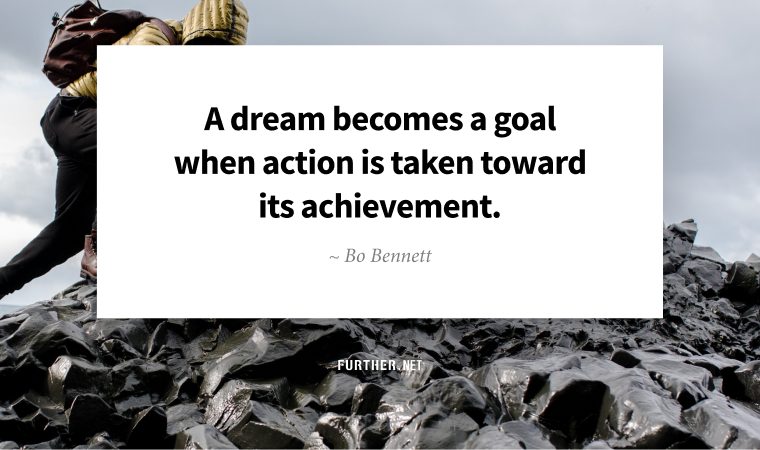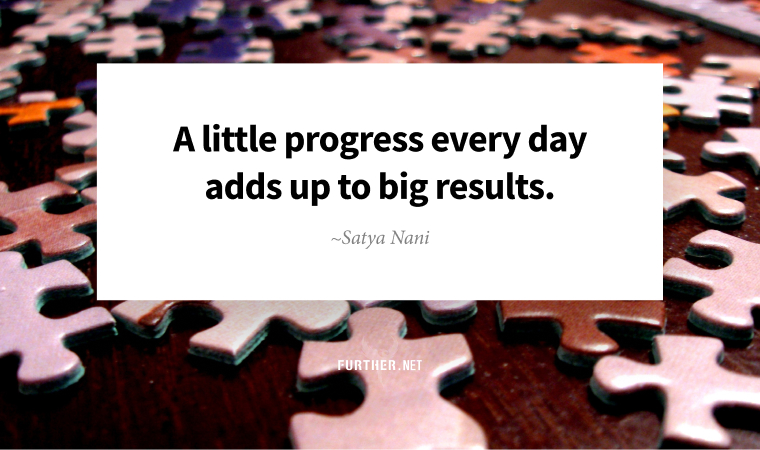
When it comes to change, getting started can be tough. And as we head into 2022, implementing a commitment to a new workout plan is on many minds.
Beyond getting started, there’s the “keep going” aspect that is even more of a challenge. For example, 92% of American adults who start the process of achieving a new goal end up giving up.
A massive new study published in Nature involving 61,293 American gym members took a look at the role of small rewards in getting people motivated to exercise and maintaining that motivation. Participants were offered rewards in the form of points that had a small cash value:
The best-performing program paid people 22 cents per gym visit. If they missed one day, they got an extra 9 cents on top of it for their next visit, as long as they missed only one.
You may have heard advice that says if you miss a workout, don’t beat yourself up about it. Just make sure you do the next scheduled workout. Turns out that advice is spot on, and apparently even tiny rewards help you to get back on track.
Of course, there’s more to it, with social accountability a major factor. Mark Beauchamp, a professor of exercise and health psychology at the University of British Columbia, sums it up this way:
Exercise is a very complex behavior, and inexpensive nudge-type interventions that provide marginal behavior shifts can have major impacts. But it’s not just about starting a behavior. It’s about sticking with it, and social structures could boost that. When people feel socially connected to exercise, they are more likely to do it long-term.
We talked about social accountability last week. Committing to someone that you will achieve your goal ups your probability of actually doing it from that dismal 8% to 65%, and ongoing accountability interactions increase your odds to 95%.
This new research says to add encouraging messages and tiny rewards to the accountability mix. More people are exercising than ever before and getting fit is a growing trend — and we now have a winning recipe for more people to succeed.
This is the blueprint for how we’re designing Well + Wealthy, our new Further membership community coming in 2022. Group accountability, credible instruction, motivating messages, and yes … rewards.
You can gain free access to Well + Wealthy by accumulating our $MOVE coin for referring others to sign up for Further. We’re developing all new resources that will help make that a snap.
Once inside the community, you’ll continue to earn $MOVE rewards to use in other ways. When you start a goal, complete a workout or other task, and get back on track after missing a day or two, you’ll be earning $MOVE rewards while headed to the big reward of achieving a goal that may have eluded you in the past.
It’s going to be lots of fun no matter what. And with our research-backed community design, it should also be highly effective.
We’ll have full details about Well + Wealthy early in the new year. For now, let’s take a break, enjoy the holidays, and get ready for a great 2022. Further will be back on January 4th.
Study Unlocks the Secrets to Developing a Regular Workout Habit
Keep going-
P.S. Interested in Further and Well + Wealthy? Join us here.
There’s No Silver Bullet
Love this manifesto from Brad and Steve over at GrowthEQ. People are always looking for the silver bullet when it comes to fitness, but the reality is that what you do to get fit is generally simple. What’s not easy is getting it done consistently.
Nailing the Basics is Simple Not Easy
Be Like Brent
Brent lost 35 pounds and no longer needs blood pressure medication … and it happened in only six months. What did he do? He paid attention to some basic fitness fundamentals and found a way to be held accountable. It works.
How an Accountability Partner Changed Brent’s Life
Losing the Senescent
We’ve been telling you for years about senescent cells here at Further. The accumulation of these cells are the main cause of aging-related diseases, so the idea is that if you get rid of them, you alleviate premature aging and extend your lifespan. As always, the next step is human trials to be certain — but it’s looking promising so far.
New Drug Found to Kill Senescent Cells in Mice, Extend Lifespan
Keep Your Cognition Up
Aging can negatively impact many things. In this case, the solution to one problem older men face seems to prevent a much more serious affliction. New research suggests that the use of Viagra is associated with dramatically reduced incidence of Alzheimer’s disease.
Giant Study Finds Viagra Is Linked to Almost 70% Lower Risk of Alzheimer’s
Ace Your Life Goals as Easy as 1-3-5

By Trudi Roth
Last week, Brian reminded us it’s almost resolution time again. This reminded me of one of my favorite statistics: only 8% of American adults who plan a New Year’s fresh start achieve it.
A SMART approach to goal-setting, as Brian pointed out, makes things quantifiable, timely, and more realistic. That’s a great start; however, even the best-laid plans fall apart. That 92% “failure” rate says most people bail when they don’t achieve success as they’ve defined it, tossing out any incremental improvements along with it.
The thing is, a little self-compassion can go a long way. Studies show it’s a far better motivator than self-criticism. Putting a pin in feeling inadequate and insecure bolsters productivity, resilience, and goal fulfillment.
There’s another approach to making progress that builds wiggle room into the push for progress: the 1-3-5 rule.
Sounds Odd, But It Works
It all starts with your to-do list. Identify your #1 priority, either a must-do or simply what’s most likely to be completed. Put that at the top of your list.
Next, write down three medium and five small tasks. This refers both to their scope and level of importance. The medium items should be significant but not necessarily urgent. The final five would be good to accomplish but not a big deal if you don’t.
The beauty of the 1-3-5 rule is it factors in things like procrastination and injects some leeway into your day.
This plan is a gentle way to build you up to success without bringing you down when you don’t hit your daily target.
Keep in mind you don’t just forget about what you didn’t finish. At day’s end, journal about your results and move what still needs to be done to your to-dos for the following day.
Progress You Can Count On
The 1-3-5 rule provides a lot of benefits:
- Doing your best and leaving the rest alleviates stress.
- Science shows crossing off to-dos creates a sense of accomplishment, triggering a feel-good rush of dopamine.
- Also, research shows follow-through increases when you write things down because it tells your brain that you mean business.
Once you integrate this rule into daily life, you can level up your achievements by using it for weekly, monthly, yearly, or even multi-year planning. Going back to journaling; if you keep a “goal dump” of your objectives and tasks, you’ll have a master to-do list to pull from and apply the 1-3-5 rule that can help you shape your future.
But that’s getting ahead of yourself. Stick to the 1-3-5 rule each day, and enjoy the forward motion. A year later, and you’ve completed 365 important things — just in time to start anew.
How to Plan Your Life with the 1-3-5 Rule (Lifehack)
further: flashback
 The Offspring – Self Esteem
The Offspring – Self EsteemSmash, 1994
“Now I know I should say no
But it’s kind of hard when she’s ready to go
I may be dumb, but I’m not a dweeb
I’m just a sucker with no self esteem.” (YouTube)
further: sharing

Further subscribers earn $MOVE coin by sharing Further with friends to gain access to our exclusive membership community Well + Wealthy (coming early 2022). Get your own free weekly dose of health, wealth, travel, and happiness advice here, and get all the details on our referral program.
Thank you for sharing Further!
